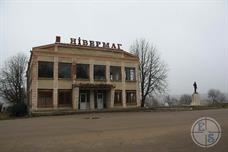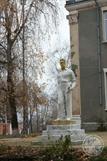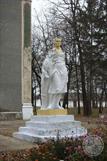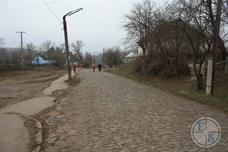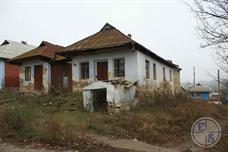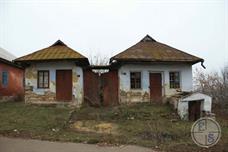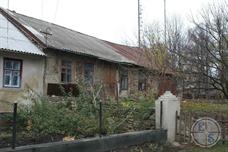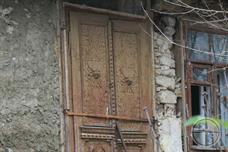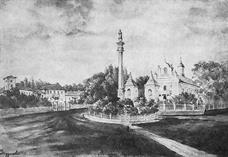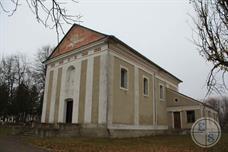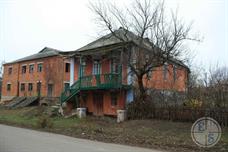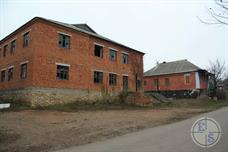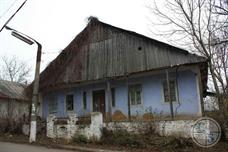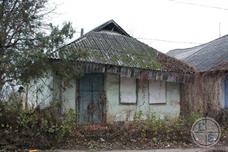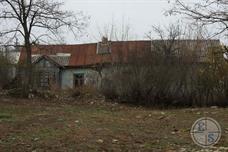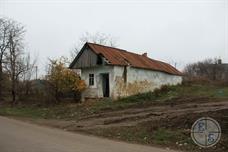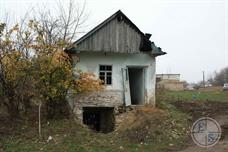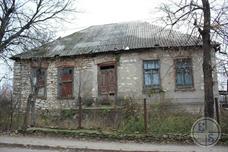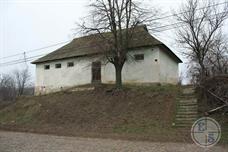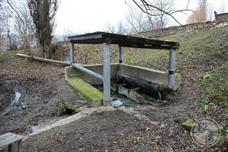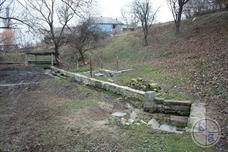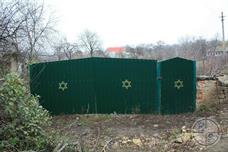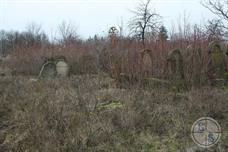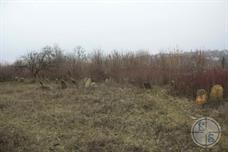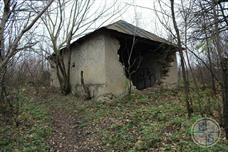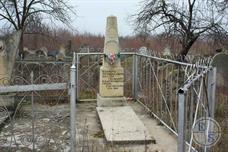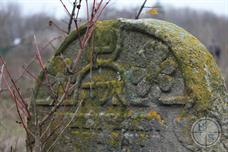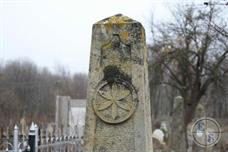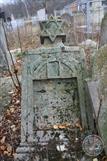Dzyhivka
Dzyhivka, 2012, 2015
Settlement Dzyhivka known since the beginning of the XVIII century., In 1787 it received from King Stanisław August the status of the town and the privilege to hold regular fairs.
At the end of the 1780s. Dzyhivka Jews were assigned to Yampolsky community, and in 1790 - to the community Myastkovki.
In the middle of the XIX century. according to official data, in 1853 in the town there were a synagogue and a "school prayer" (total 1056 parishioners). In 1845 here operated six headers of the first stage (a total of 88 students) and six - the second (more than 30 students). In 1852 there were 35 in Dzyhivka Jewish artisans with a total equity turnover of 1,500 rubles per year.
In 1871 here there were 1510 residents, attributed to the trading estate (mostly Jews) and 2 640 - to rural; Just place it was 721 homes.
In 1889, the community as a part of a person in 1007 contained three synagogues, called "Shul", "Base-Gamidrash" and "Cloughs."
According to contemporaries, at the end of the 1880s. "Palestinian idea, which aims to accustom the Jews productive work", found its adherents in this remote province. At this time in Dzyhivka young people from wealthy families have tried to raise funds to build palestinofilskoy organization.
The sources of income of the bulk of the Jewish population, which accounted for the owners of small shops, artisans and petty traders, were fair, held every two weeks, and the local distillery.
Economic stagnation in the South-West region in the 1890s. affected the financial situation of the Jewish population Dzyhivka, frequent crop failures aggravated the situation of small hlebotorgovtsa.
At the beginning of the XX century in Dzyhivka had five synagogues and prayer houses. Most of the Jewish population - craftsmen and small traders - lived in poverty, more affluent Jews kept stores and shops (about fifty), besides pharmaceutical and forest stocks, pharmacy and an inn. The Jews were in a bank, hospital, and on mёdovarennom distillery managers who were also Jews.
At the end of the 1780s. Dzyhivka Jews were assigned to Yampolsky community, and in 1790 - to the community Myastkovki.
In the middle of the XIX century. according to official data, in 1853 in the town there were a synagogue and a "school prayer" (total 1056 parishioners). In 1845 here operated six headers of the first stage (a total of 88 students) and six - the second (more than 30 students). In 1852 there were 35 in Dzyhivka Jewish artisans with a total equity turnover of 1,500 rubles per year.
In 1871 here there were 1510 residents, attributed to the trading estate (mostly Jews) and 2 640 - to rural; Just place it was 721 homes.
In 1889, the community as a part of a person in 1007 contained three synagogues, called "Shul", "Base-Gamidrash" and "Cloughs."
According to contemporaries, at the end of the 1880s. "Palestinian idea, which aims to accustom the Jews productive work", found its adherents in this remote province. At this time in Dzyhivka young people from wealthy families have tried to raise funds to build palestinofilskoy organization.
The sources of income of the bulk of the Jewish population, which accounted for the owners of small shops, artisans and petty traders, were fair, held every two weeks, and the local distillery.
Economic stagnation in the South-West region in the 1890s. affected the financial situation of the Jewish population Dzyhivka, frequent crop failures aggravated the situation of small hlebotorgovtsa.
At the beginning of the XX century in Dzyhivka had five synagogues and prayer houses. Most of the Jewish population - craftsmen and small traders - lived in poverty, more affluent Jews kept stores and shops (about fifty), besides pharmaceutical and forest stocks, pharmacy and an inn. The Jews were in a bank, hospital, and on mёdovarennom distillery managers who were also Jews.
In November 1905, a pogrom broke out Dzyhivka that the authorities managed to stop.
In the autumn of 1917 the peasants of the village and the surrounding villages until the arrival of the troops managed to defeat all the Jewish shops. With regard to this pogrom fraction of the Bund in the Central Rada of Ukraine has made a formal request.
In 1919 Dzyhivka was a regular part of the Ukrainian army, which imposed on the spot "indemnity", taking the Jews as hostages. Subsequently, the town was repeatedly subjected to raids by armed gangs.
In the interwar period the Jewish school was opened in Dzyhivka, cheder acted informally. According to the newspaper "Der Emes" in the early 1920s. Jewish population Dzyhivka 70% consisted of "traders and shopkeepers", 30% - from artisanal craftsmen. By 1922, about half the town Jews were united in rural economic group. The number of communities in the 1923 amounted to 1 561 people.
Before the war in Dzyhivka lived 858 Jews (12% of the population).
Dzyhivka village was occupied in late July of 1941 and was on the territory of Transnistria. In the town were placed around a hundred Jews deported from Romania. Ghetto was created. Jews used as forced fieldwork large group of them hijacked in Mykolaiv on the construction of the bridge.
After the liberation Dzyhivka spring of 1944 was only a few hundred people in the community. After the war, Jews migrated to the big cities, in the village remained only old people. In a private house until the end of the 1980s. I am going to minyan.
In 1998 he lived in the village 12 elderly Jews, who took care of the community Yampol.
Today, Jews do not live in Dzyhivka.
Dzyhivka - a classic example of a dying town. In some places still stand pretty houses left over from the building of the Jewish shtetl, abandoned and collapsing. Their fate and the two-storey department store, built on the former main shopping area Dzyhivka, Soviet and other buildings already built - large, modern at that time, but today proved unnecessary ...
From the estate Potocki nothing left, and the church, embodied in the figure of Napoleon Orda, completely lost its original appearance and does not look like a grand structure, seen Belarusian traveler.
From the estate Potocki nothing left, and the church, embodied in the figure of Napoleon Orda, completely lost its original appearance and does not look like a grand structure, seen Belarusian traveler.
Vinnitsa Region

My shtetl
My shtetl
Jewish towns of Ukraine
Jewish towns of Ukraine
